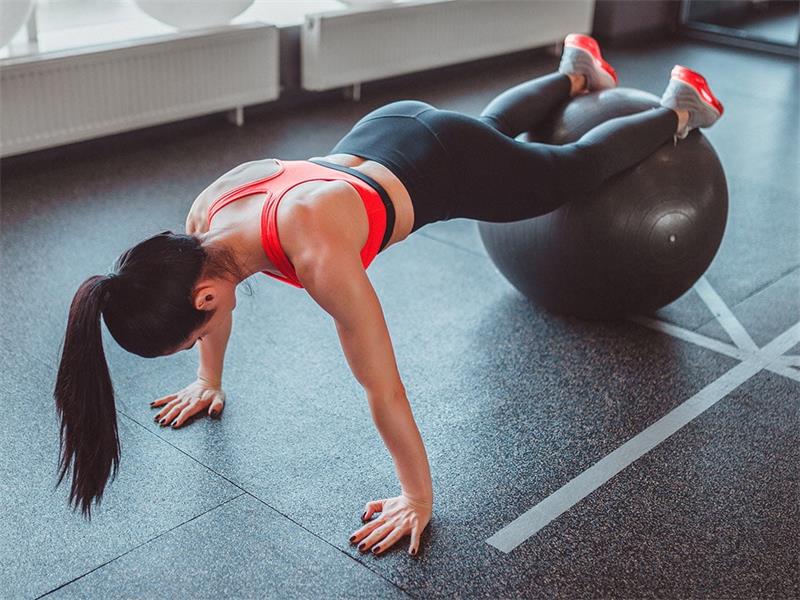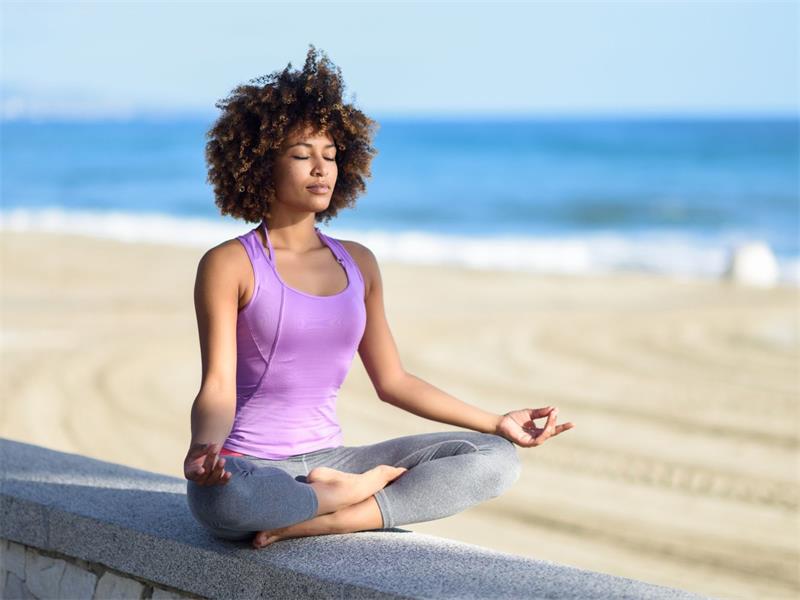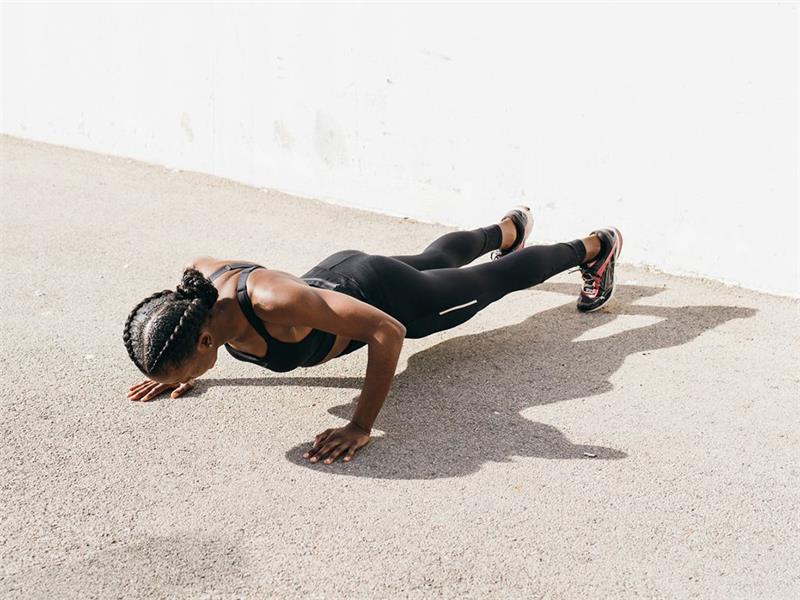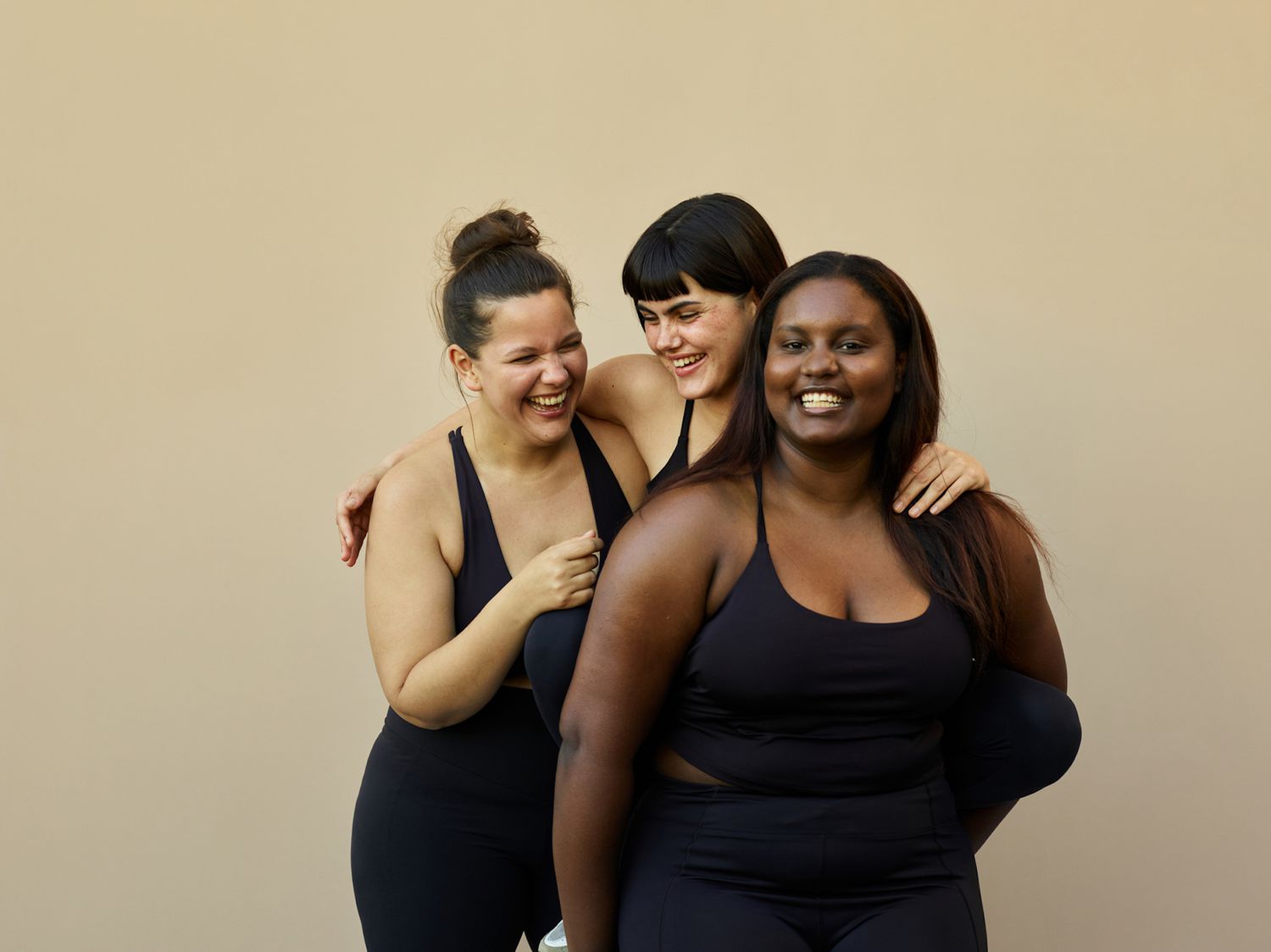Contents
- 1 The Importance of Good Posture
- 2 How Poor Posture Can Lead to Health Issues
- 3 Exercise 1: Shoulder Blade Squeeze
- 4 The Cat-Cow Stretch
- 5 Exercise 3: Wall Angels
- 6 Exercise 4: Plank Pose
- 7 The Power of the Cobra Pose
- 8 Exercise 6: Chin Tucks
- 9 The Hip Flexor Stretch: A Powerful Exercise for Improving Your Posture
- 10 Conclusion
The Importance of Good Posture
Have you ever heard the phrase “stand up straight” or “sit up straight”? Well, it turns out there is a reason why people have been giving this advice for centuries. Good posture is essential for maintaining a healthy body and mind.
When we have good posture, we are properly aligned and our muscles and joints are balanced. This allows us to move more efficiently and with less strain on our bodies.
Poor posture can lead to a variety of health issues, both physical and mental. When we slouch or hunch over, it puts extra pressure on our back muscles and spine.
This can cause pain in the neck, shoulders, back, and hips. In addition, poor posture can also affect our breathing, digestion, circulation, and even our mood.
How Poor Posture Can Lead to Health Issues
Let’s take a closer look at some of the specific health issues that can be caused by poor posture. Firstly, poor posture can lead to chronic pain in various parts of the body including neck pain or stiffness that could spread down your shoulders to your arms; lower back pain or stiffness that could spread down your legs; headaches; muscle fatigue; strains or spasms in muscles. Secondly, it can affect how well air moves in and out of your lungs which could cause shortness of breath as well as other respiratory problems.
Thirdly lack of movement owing to prolonged sitting due to bad sitting posture may contribute to obesity which is associated with various chronic diseases such as heart disease, stroke, and type 2 diabetes among others. when you chronically adopt a sloughing position It affects self-confidence levels because body language speaks volumes even before one opens his/her mouth thus leading to impressionable minds not giving you the respect you deserve.
Exercise 1: Shoulder Blade Squeeze
How to perform the exercise
The Shoulder Blade Squeeze is a simple exercise that can be done anywhere and anytime. Start by sitting or standing up straight with your shoulders relaxed. Keep your head facing forward and your chin parallel to the ground.
Take a deep breath in, then exhale slowly as you squeeze your shoulder blades together. Hold this position for 5-10 seconds, then release and repeat for 10-15 repetitions.
When performing the Shoulder Blade Squeeze, it’s important to focus on squeezing only your shoulder blades together and avoid shrugging your shoulders or tensing other muscles in your body. You should feel a slight stretch between your shoulder blades as you squeeze them together.
Benefits of the exercise
The Shoulder Blade Squeeze helps to improve posture by strengthening the muscles that support the upper back and shoulders. This exercise also helps relieve tension and pain in the upper back, neck, and shoulders caused by prolonged sitting or standing. By practicing this exercise regularly, you can improve overall posture alignment which will help reduce strain on joints and muscles throughout the body.
Additionally, improved posture has been linked to increased energy levels, improved breathing function, better digestion, higher self-esteem, and reduced risk of developing chronic pain conditions later in life. Overall, incorporating Shoulder Blade Squeezes into your daily routine is an effective way to maintain good posture habits while relieving stress on overworked muscles in the upper body.
The Cat-Cow Stretch
Are you looking for a simple and effective exercise to improve your posture? Look no further than the Cat-Cow Stretch! This gentle yoga pose is great for stretching out your spine, alleviating back pain, and improving your overall posture.
How to Perform the Exercise
To perform the Cat-Cow Stretch, start by getting on all fours with your hands positioned directly beneath your shoulders and your knees positioned directly beneath your hips. Take a deep breath in and then slowly exhale as you round your spine towards the ceiling, dropping your head down towards the ground.
This is known as the “cat” position. Then inhale as you arch your back, bringing your head up towards the ceiling while keeping your arms straight.
This is known as the “cow” position. Repeat this movement for several breaths, focusing on slowly moving between each position.
Benefits of the Exercise
The Cat-Cow Stretch can offer a multitude of benefits when practiced regularly. Firstly, it stretches out and strengthens all of those important muscles in our spine that help us maintain good posture throughout our day-to-day activities. It can also help alleviate any tension or pain in our neck or lower back by gently massaging these areas during each movement.
In addition to these physical benefits, practicing this stretch can also have a profound impact on our mental well-being by promoting a sense of calm and relaxation through controlled breathing and gentle movements. Overall, incorporating the Cat-Cow Stretch into our daily routines can be an easy yet effective way to improve posture while also taking care of both our physical and mental health at the same time!
Exercise 3: Wall Angels
How to perform the exercise
Wall Angels may sound like a weird activity, but they are a great exercise for improving your posture. To perform this exercise, start by standing with your back against a wall and your feet shoulder-width apart. Make sure your heels, buttocks, shoulders, and head are all touching the wall.
Now slowly raise your arms up so that they form a “Y” shape above your head. Your elbows should be bent at a 90-degree angle and your forearms should be pressing into the wall.
Move your arms up and down slowly while keeping them in contact with the wall. It’s important to keep your posture in check during this exercise.
Make sure that you don’t arch your back or lift away from the wall as you move through the range of motion. Aim for 10-15 reps per set.
Benefits of the exercise
Wall Angels is an excellent way to strengthen key muscles in your upper body that help support good posture. The exercise targets several muscles including the trapezius, rhomboids, and rear deltoids which work together to help stabilize the spine. By performing Wall Angels regularly you’ll improve shoulder mobility which can relieve tension in neck and shoulder muscles as well as reduce stiffness in upper back muscles.
This exercise is also helpful for those who spend long hours sitting at a desk or driving since it opens up chest muscles that tend to get tight from prolonged sitting positions. Start incorporating Wall Angels into your daily routine for improved posture and reduced pain caused by poor sitting habits!
Exercise 4: Plank Pose
How to Perform the Exercise
Plank pose is an excellent exercise that you can do to improve your posture. It works by strengthening the muscles in your core and upper body, which are essential for maintaining good posture. Here’s how you can perform this exercise:
1. Start by getting into a push-up position, with your hands directly under your shoulders and your feet hip-width apart.
2. Engage your abs and glutes to keep your body in a straight line from head to heels.
3. Hold this position for as long as you can, keeping your core and glutes engaged the entire time.
4. Try to hold this pose for at least 30 seconds, gradually increasing the time as you get stronger.
Benefits of the Exercise
The plank pose has many benefits when it comes to improving posture. Below are some reasons why you should add this exercise to your routine:
1) Strengthens core muscles: This exercise targets the muscles in your abdomen and lower back, which are crucial for maintaining good posture.
2) Improves balance: The plank poses challenges to your balance by forcing you to maintain a straight line from head to heels.
3) Reduces lower back pain: If you suffer from lower back pain due to poor posture, incorporating the plank pose into your workout routine can help alleviate discomfort.
Adding the plank pose to your regular workouts is an excellent way of improving posture by strengthening core muscles, improving balance and reducing lower back pain caused by poor posture. By following these simple steps on how best to perform this exercise coupled with its numerous benefits listed above – it’s easy for anyone looking for ways of achieving better postures without too much strain on their bodies!
The Power of the Cobra Pose
The cobra pose is a yoga posture that opens up the chest, strengthens the back muscles, and improves spinal flexibility. As we spend hours hunched over our desks or phones, our posture suffers and our core muscles weaken.
Practicing cobra pose regularly can alleviate some of these issues by helping to correct rounded shoulders and hunching, which can lead to neck and back pain. To perform a cobra pose, begin by lying face down on your mat with your legs straight behind you.
Place your hands under your shoulders with your fingers spread apart. Engage your core muscles as you press the tops of your feet into the mat.
Inhale as you slowly lift your chest off the ground while keeping your elbows close to your sides. Keep pressing down through the tops of your feet as you lift up through your chest.
How to Perfect Your Form
As with any yoga posture, it’s important to maintain proper form while practicing the cobra pose. Start by taking a few deep breaths before beginning the practice and engage in relaxation techniques such as deep inhales and exhales, breathing in from both nostrils simultaneously so that air passes through both lungs equally.
Make sure that when lifting off from the ground, you’re using enough force in order to properly flex those spinal muscles without straining yourself too much; it’s about balance! It’s also important not to overextend or arch too much in this position- keep everything nice and even throughout.
The Benefits of Practicing Cobra Pose
Cobra pose is an excellent way to improve overall posture by stretching out tight chest muscles while strengthening weak upper back muscles at once – two for one! By making sure that all aspects are properly engaged during this posture (specifically focusing on core strength), one can benefit from better circulation throughout the body due to fewer restrictions on movement which means more oxygen and nutrients being delivered to cells. Practicing the cobra pose regularly can also help to improve breathing efficiency and lung capacity by expanding the chest muscles over time, making it easier for air to enter and exit the body.
Exercise 6: Chin Tucks
How to perform the exercise
Chin tucks are one of the simplest yet effective exercises to improve your posture. Here’s how to do it:
1. Sit with your back straight and shoulders relaxed.
2. Slowly and gently draw your chin inwards towards your neck, as if you’re making a double chin.
3. Hold this position for five seconds while keeping your shoulders relaxed.
4. Release the stretch and repeat for ten repetitions.
It is important not to force your chin or neck into this position as it can cause strain or discomfort, so be sure to take it slow. As you get more comfortable with this exercise, try doing it standing up against a wall.
Benefits of the exercises
Chin tucks help strengthen the muscles around your neck and upper back which are essential for good posture. With consistent practice, these muscles will become stronger helping keep your head positioned over the spine, reducing stress on the muscles that support it. Additionally, those who spend long hours sitting at a desk or in front of a computer may experience pain or stiffness in their necks and shoulders due to poor posture and prolonged forward head position.
Chin tucks can help alleviate this tension by stretching out those areas while also strengthening them at the same time. By incorporating chin tucks into your daily routine, you’ll improve your posture overall making for a healthier back and more confident appearance!
The Hip Flexor Stretch: A Powerful Exercise for Improving Your Posture
How to Perform the Hip Flexor Stretch
The hip flexor stretch is a simple yet effective exercise that can help improve your posture. To perform this stretch, start by standing with your feet shoulder-width apart.
Take a large step forward with your right foot, bending your knee at a 90-degree angle. Your left leg should be extended behind you, with the knee resting on the floor.
Next, shift your weight forward until you feel a stretch in the front of your left hip. Hold this position for 15-30 seconds before releasing and repeating on the other side.
The Benefits of the Hip Flexor Stretch
The hip flexor stretch offers numerous benefits when it comes to improving posture. By stretching out these muscles, you can help reverse some of the damage caused by sitting for prolonged periods or engaging in activities that require heavy use of these muscles.
As well as improving posture, regularly performing hip flexor stretches can also help alleviate lower back pain and improve overall flexibility and range of motion in the hips. In addition to these physical benefits, taking time each day to focus on stretching and improving our posture can also have positive effects on our mental well-being.
Taking care of our bodies through exercise and healthy habits is an important part of living a fulfilling life. So next time you feel yourself slouching or experiencing lower back pain from sitting too long at work – take a few minutes to perform some hip flexor stretches and see how it feels!
Conclusion
Stay Healthy and Improve Your Posture
Good posture is not only important for physical appearance but also for overall health. By practicing these exercises regularly, you can improve your posture, reduce pain in your neck and back, and increase your confidence. Incorporating just a few of these exercises into your daily routine can make a big difference over time.
Remember to start slowly and listen to your body. If you experience any pain or discomfort during the exercises, stop immediately.
It’s important to maintain correct form throughout each exercise to avoid injury. Over time, with practice and consistency, you’ll see improvements in your posture and overall well-being.
The Power of Consistency
Consistency is key when it comes to improving your posture through exercise. It’s important to make these exercises a regular part of your routine in order to see results.
Consider setting a specific time each day dedicated to practicing these exercises or incorporating them into something you’re already doing on a daily basis. Don’t get discouraged if progress seems slow at first – Rome wasn’t built in a day!
Keep at it consistently and take note of even small improvements over time. Remember that small progress is still progress!
You Got This!
Improving your posture may seem like an overwhelming task at first, but by following the steps outlined in this article you are well on your way towards better health and confidence! You have the power within yourself to make positive changes and improve not only how others perceive you but also how you feel about yourself! Best of luck on this journey towards better posture!











